Frank (Doucette) and I treated ourselves to an impromptu outing last Sunday, after receiving an email notice from Orange County lutenist/occasional harp guitarist John Schneiderman. To coincide with a Russian Fabergé exhibit at the Bowers Museum, he gave a free (to museum-goers) hour-long concert of rare Russian guitar repertoire. He chose to play the whole program on his recently acquired 1908 Eroshkin (Yeroshkin) 11-string Russian harp guitar. That means seven on the neck, plus four floating strings.
Notice that I didn’t call them “sub-basses.” As some of you already know, just one of the four extra strings (the outer string, C) is actually lower than the lowest string on the neck (D). The others are otherwise-missing open notes on the traditional Russian guitar neck, tuned to “open G.” In fact, two of them are “our” E and A – which makes sense, since their two lowest strings are D and G. The final pitch (on a 7+4) is nominally F. Traditionally, this would be between the E and the A strings (for CEFA), but John argues that a better option (and one possibly historically used) is CFEA (followed on the neck by DGBdgbd’). To him, it is much more intuitive and musical having what thus constitutes three sets of 4ths (or Root/Fifth) in pairs. Get it? (C & F, E & A, then on the neck, D & G) It was new (and simple and clever) to me, especially after having recorded my one piece with my “traditionally-tuned” 7+4 Zimmerman on the very un-traditional Brad Hoyt CD piece “Fisherman’s Mistress.” Frankly, either way you tune it, the Russian harp guitar is a puzzle best left to experts!
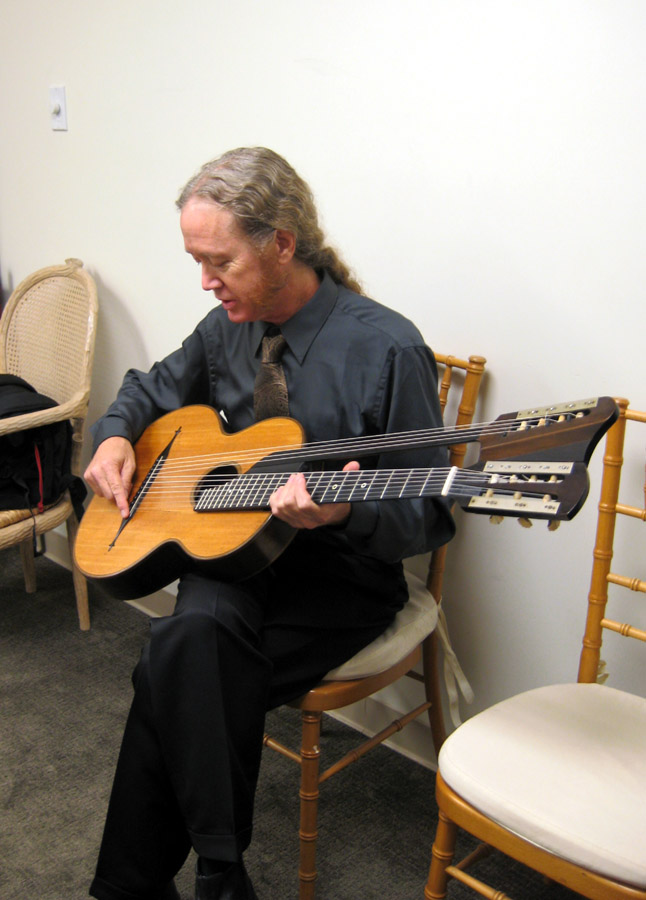
You’ll all be able to get a sense of this when John’s Russian music duet partner Oleg Timofeyev does his thing at the Harp Guitar Gathering this November. I imagine that John will warn Oleg that we expect to see a lot of “harp guitar” playing! I say “see” because it is often hard to hear (or at least, notice), since the open strings are mostly higher-pitched than the low D neck string. We ribbed John about this to no end – as we had driven to O.C. for harp guitar playing, dang it! But it seems that John – even though a spectacular virtuoso on many floating-strings lutes and guitars (seemingly with eyes in his right thumb) – chooses to play his Russian harp guitar by fretting the in-between bass notes with his left-hand thumb (wrapping around for the 7th and 6th strings). Before you get too judgmental, you need to remember that “thumb-wrapping” was a common “pre-Classical guitar” technique for ages. But yes, Frank and I found it ironic that John chose to swap his style on an otherwise-ready-to-go harp guitar! (John said “I can go either way. It depends which thumb I want to show off with!”) He insists that he definitely played “two or three” open strings in this repertoire (perhaps we were just “resting our eyes” at the time…). And yes, Oleg will definitely be playing his floating strings (he has 5 to John’s 4).
Regardless, what I quite enjoyed – amidst all John’s virtuosity – was the noticeable extra ringing and “melodic style” of the open G tuning (yes, our guitar has three of these open notes, but his are all seven). With a lot of G and D major and minor keys, it was a bit like the DADGAD equivalent of Early Romantic Guitar. I’m a fan! (P.S: A gorgeous, must-have harp guitar CD is the Czar’s Guitars by Oleg and John…who are planning on something even more elaborate next year)
I was even more intrigued by another instrument John hopes to commission one day (he’s already got a half dozen European and Russian harp guitars) – a quart version of the Russian 7+4 floating strings guitar (Russian guitar duos often included a 7-string quart-guitar). That means all 11 strings tuned up a fourth. That would be sweet.
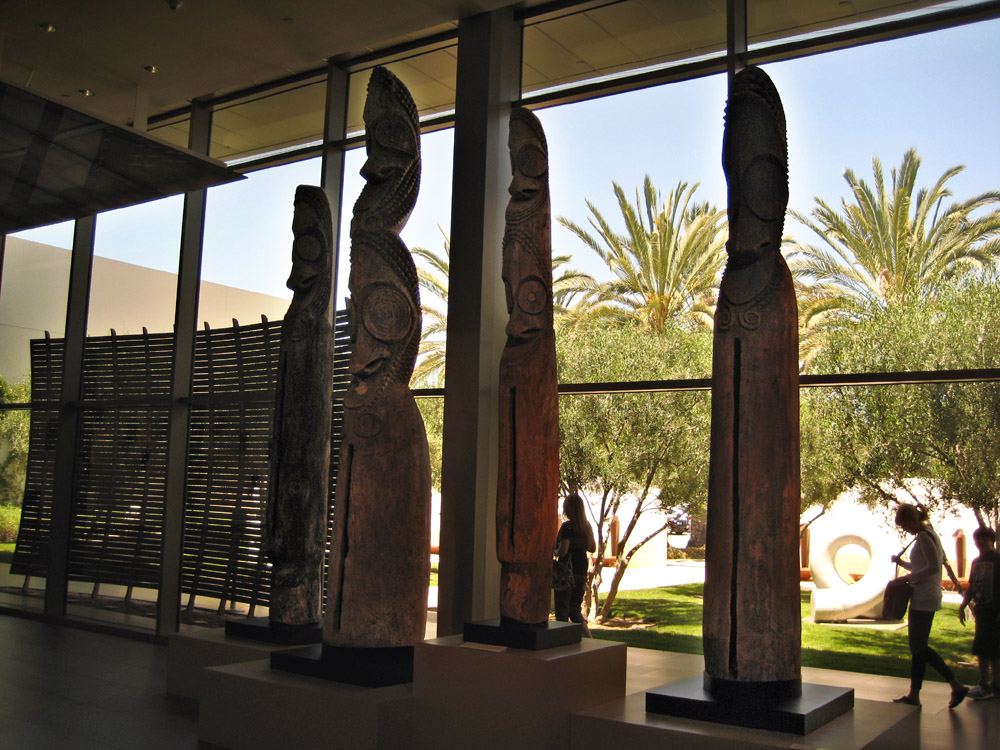
After this enjoyable concert and chat, we wandered the museum, which neither of us had been to. The Bowers is very nice, and a perfect, manageable size to really enjoy the spread-out exhibits. I particularly loved the Pacific Islands ethnographic art (though their occasional headhunting antics can be a bit of a buzz-kill) – including the largest slit drums I’ve ever seen.
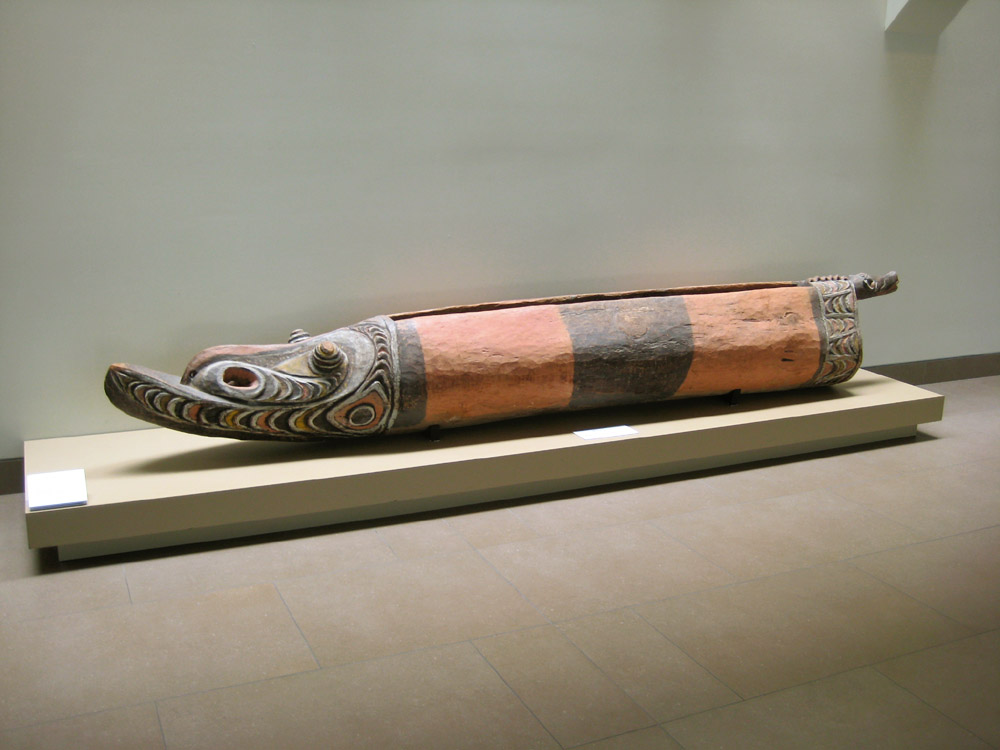
I recommend a visit if you’re in the area – it’s just down the street from the Discovery Science Center, that giant tilted cube alongside the 5 freeway. You can’t miss it.
Oh, and don’t miss a chance to see John perform if you’ve ever the opportunity – and, of course, the rare, up-close-and-personal experience with Oleg at HGG10!

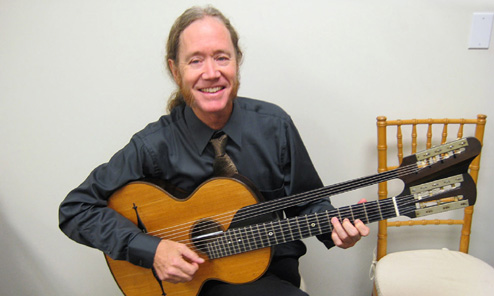
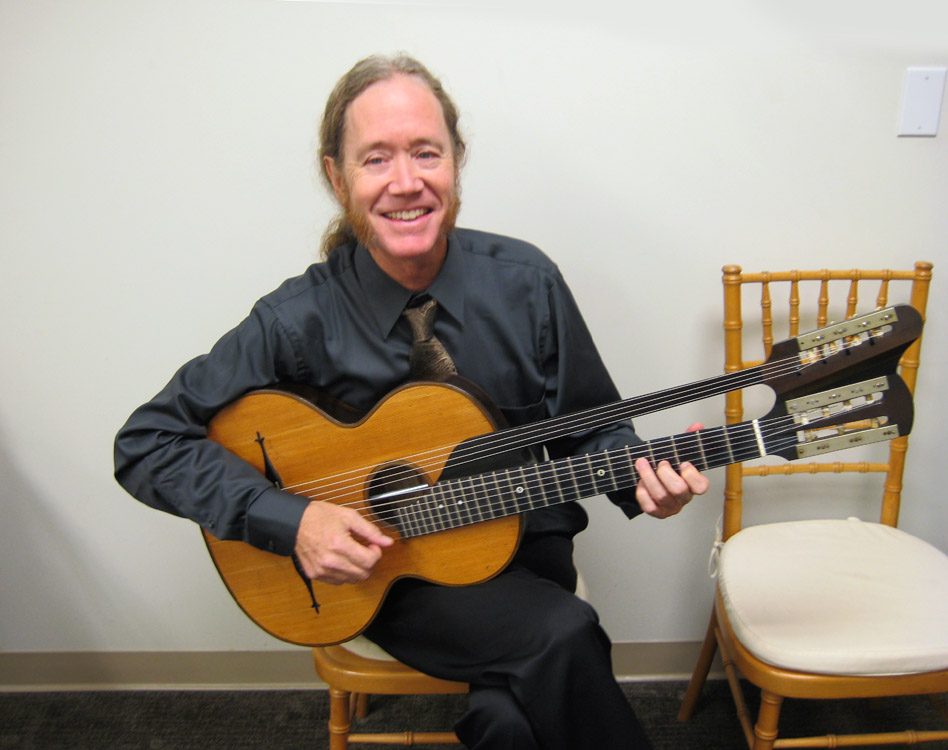
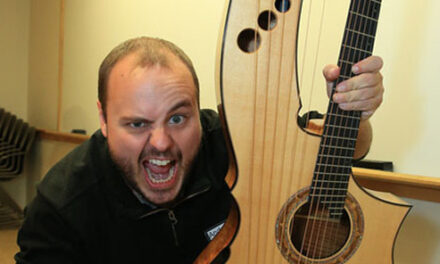
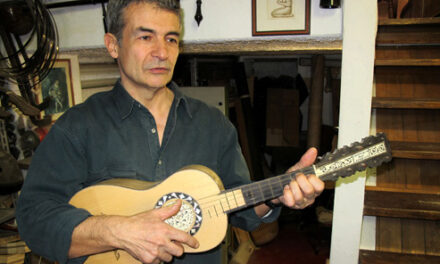
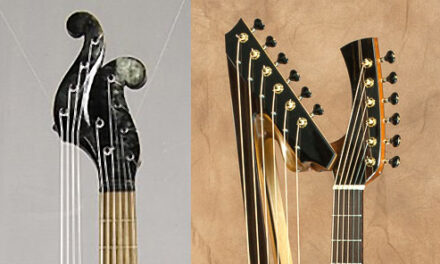
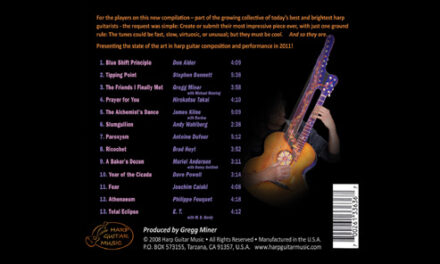
I’ve seen a version w/ a 5th Floating String tuned to a B1 which is a half step below that C2. There are versions w/ more strings but I’m working on finding them.